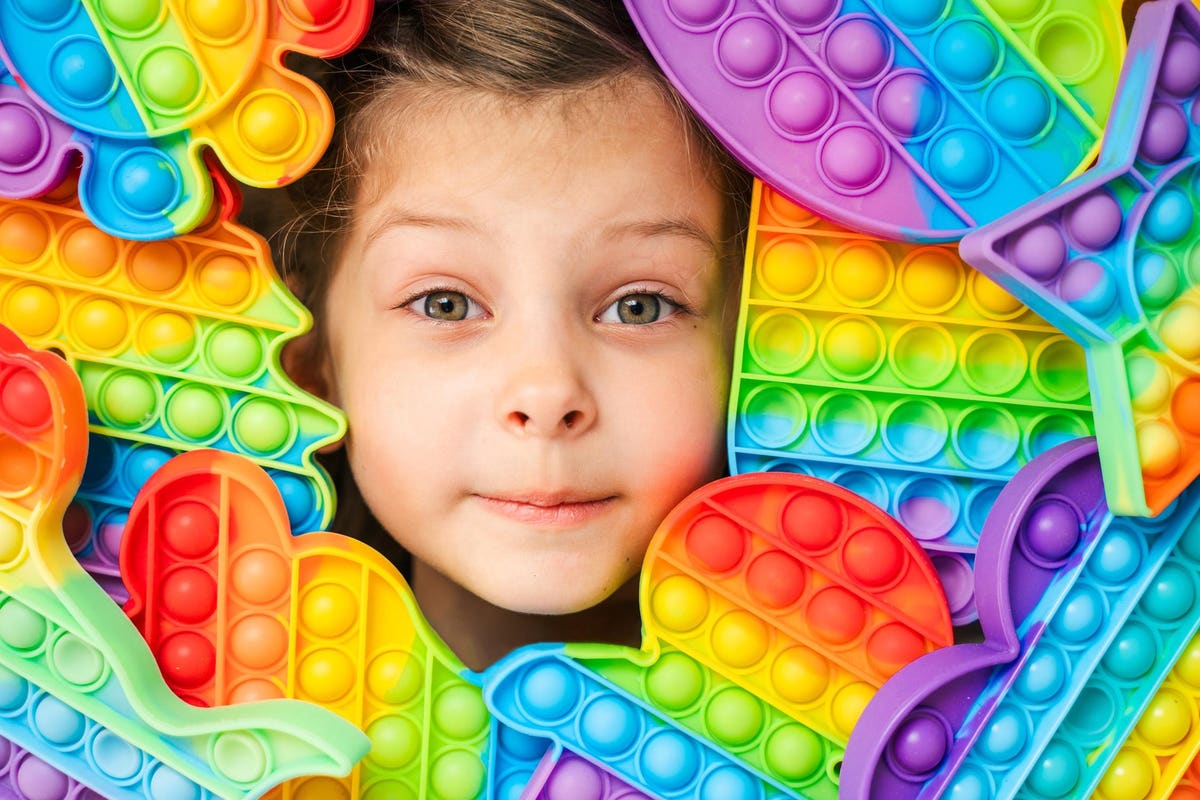Sensory play is more than just fun and games. It’s a vital component of childhood development.
The rich neural pathways formed through sensory play facilitate learning and growth in all children, regardless of their neurotype. Research shows that exposure to sensory-rich environments positively influences cognitive development.
“Sensory play is adaptable and accommodating, making it beneficial for sensory-sensitive and sensory-seeking children,” said Dr. Krystal Starke, Child Testing Researcher. “It allows them to meet their unique sensory needs and adapt their environment to their preferences, promoting self-regulation and comfort.”
This type of play, where children explore various materials, textures, sounds, smells, and visual stimuli, can transcend the traditional boundaries of structured activities and invites children into a world of unbounded exploration.
Play With A Purpose
In childhood development, sensory play promotes inclusive, open-ended play that cultivates vital skills, promotes self-regulation, sparks exploration, enhances problem-solving abilities, and nurtures creativity.
“It also stimulates the brain through inclusive, open-ended play that allows self-regulation, exploration, problem-solving, and creativity,” Corinne Eggleston, Ph.D., Manager, Early Childhood Development Research at the Fisher-Price Play Lab, adds. “It fosters the development of essential skills in all children, supporting their growth and learning. Sensory toys that offer tactile sensations, soothing sounds, and visual features can effectively promote relaxation and reduce anxiety in children.”
Some other benefits are:
Self-Regulation: One of the key benefits of sensory play is its capacity to foster self-regulation. Allowing children to control their sensory experiences empowers them to manage their emotions and reactions.
Christina Kozlowski, an Occupational Therapist and Founder of Sensory TheraPLAY Box, explained, “Sensory toys can benefit neurotypical children by engaging multiple senses, encouraging sensory integration and processing abilities. They promote physical development, including hand-eye coordination and spatial awareness. Sensory toys aren’t just for learning purposes; they’re fun and soothing to play with and encourage social interactions among children!”
Exploration: Sensory play provides a safe space for exploration. Children can investigate new textures, smells, and sounds, building their curiosity and expanding their understanding of the world. This form of inquiry nurtures their cognitive and sensory processing abilities.
Problem-Solving: Sensory play often involves open-ended materials that encourage problem-solving. Whether figuring out how to manipulate a squishy sensory toy or creating a masterpiece with colored sand, children constantly solve challenges through their play.
Creativity: Creativity flourishes in sensory play. The freedom to experiment with different sensory inputs inspires imaginative play and self-expression. Sensory experiences can stimulate children’s creative thinking, allowing them to think outside the box and envision new possibilities.
Neurodiversity and Sensory Toys
It’s also important to note that sensory play holds immense promise for neurodiverse children, including those with autism or sensory processing disorders. The versatility of sensory play makes it an effective tool for addressing these children’s unique needs and challenges.
“Many autistic children stim, which refers to self-stimulatory behaviors such as shaking, spinning objects, hand flapping, rocking, pacing, twirling, and humming,” said Dr. Kozlowski. “Children who experience sensory sensitivity often stim to help reduce uncomfortable sensory input in overwhelming environments. Offering them a sensory toy to fidget with can help support them during these situations.”
Research supports this. One online survey study done of 100 autistic adults highlighted a wide range of reasons for stimming, including a coping mechanism to reduce anxiety (72%), overstimulation (57%), or to calm down (69%).
Another study showed that using a fidget spinner helped improve fine motor control (at least in the short term), and children with ADHD saw enhanced cognitive performance.
In addition, Dr. Starke believes that sensory toys can create a common ground for children of all neurotypes to bond and understand each other. They enable children to play together, regardless of sensory preferences, fostering inclusivity and social interactions.
Finding The Right Sensory Toy
Selecting the right sensory toys for your child, whether they are neurodiverse or neurotypical, involves careful consideration of their unique preferences and sensitivities. Prioritizing toys that align with their particular sensory needs and play style is essential.
Dr. Starke explained that the customization and consistency of sensory toys make them effective tools for children with varying sensory needs. This is why finding the right toys for your child can make all the difference.
“Tactile toys where children engage their sense of touch, including ones where they can rub, fidget, and feel new textures, are popular tools for managing stress and overstimulation,” explained Dr. Eggleston. “If your child is anxious, with the repetitive features, the toy becomes a means to help neutralize their anxiety.”
“I constantly research and attend toy fairs to discover the latest products,” said Ms. Kozlowski. “I prioritize toys with various textures that provide strong tactile sensory input. Most importantly, the toys must be fun and quirky.”
It’s also important to note that you can use items in your house like paper towel rolls, pots, straws, and toys to encourage your children to engage in sensory play. Allowing your children to follow their imagination, whether with a sensory toy or an item at home, helps nurture their senses.
Read the full article here





